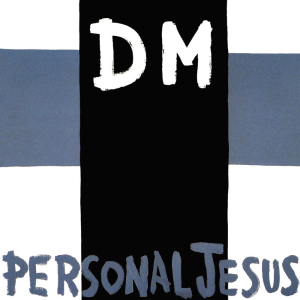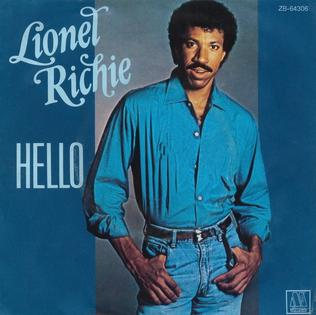 In 1984, amidst the glitz and synth-driven energy of the mid-1980s, Rockwell released Somebody’s Watching Me, a track that would become an enduring cultural touchstone for paranoia, paranoia-infused dance floors, and the quirky fusion of funk and pop. At first glance, the song seems like a lighthearted disco-tinged anthem, but beneath its catchy hooks lies a narrative of suspicion, anxiety, and the all-too-relatable feeling that someone—or something—is always observing. What makes the track unforgettable is the way it channels a universal emotion—paranoia—into a fun, funky, and irresistibly danceable package.
In 1984, amidst the glitz and synth-driven energy of the mid-1980s, Rockwell released Somebody’s Watching Me, a track that would become an enduring cultural touchstone for paranoia, paranoia-infused dance floors, and the quirky fusion of funk and pop. At first glance, the song seems like a lighthearted disco-tinged anthem, but beneath its catchy hooks lies a narrative of suspicion, anxiety, and the all-too-relatable feeling that someone—or something—is always observing. What makes the track unforgettable is the way it channels a universal emotion—paranoia—into a fun, funky, and irresistibly danceable package.
From the very first bars, the song immediately establishes a sense of nervous energy. The synth-driven bassline and percussive electronic rhythm create a feeling of movement and urgency, mimicking the anxiety described in the lyrics. Layered atop this foundation is Rockwell’s distinct vocal delivery, which oscillates between earnest alarm and sly humor. The interplay between rhythm and vocal phrasing is crucial: it turns the song into more than just a story of fear—it becomes a funky, compelling sonic experience.
The chorus is the song’s undeniable hook. Featuring backing vocals by none other than Michael Jackson, it elevates the track into near-pop perfection. The repeated line, “I always feel like somebody’s watching me,” is simultaneously catchy, memorable, and slightly unnerving—perfectly encapsulating the emotional core of the song. Jackson’s trademark smooth harmonies contrast Rockwell’s slightly edgy, nervous lead vocals, creating a dynamic tension that mirrors the song’s narrative of suspicion and social anxiety. This collaboration between Rockwell and Jackson ensures that the track’s paranoia is contagious but undeniably fun.
Rockwell’s vocals convey a vulnerability and immediacy that is essential to the song’s success. His slightly staccato delivery during the verses mimics the quick, jittery thoughts of someone constantly on edge. There is a sense of conversational intimacy, as if Rockwell is confessing his fear to the listener while simultaneously inviting them to sing along. The emotional honesty of his performance makes the track relatable, allowing listeners to engage with the story while enjoying its funky rhythm.
Instrumentally, Somebody’s Watching Me is a masterclass in mid-80s synth-pop production. The combination of electronic drums, percussive synths, and a propulsive bassline creates a sense of forward motion and tension, echoing the song’s themes of unease and hyper-awareness. The arrangement balances simplicity and complexity: each element is distinct and contributes to the song’s mood, yet nothing feels overcrowded or overwhelming. The production allows both the story and the groove to shine, making the track both danceable and narratively engaging.
Lyrically, the song captures a distinct 1980s cultural moment, tapping into the rise of surveillance anxieties, urban legends, and the feeling that the modern world is watching your every move. Lines like “I can see you when you’re sleeping / I can see you when you’re awake” flirt with absurdity and humor, yet they heighten the sense of paranoia that runs through the track. Rockwell cleverly blends hyperbole and sincerity, creating lyrics that are memorable, amusing, and unsettling all at once. This mixture of humor and anxiety is a hallmark of the track and contributes to its enduring appeal.
The song’s bridge and breakdown sections demonstrate Rockwell’s understanding of musical dynamics. During these moments, instrumentation shifts subtly, creating a sense of suspense and anticipation. The tension rises, then resolves with the familiar, comforting repetition of the chorus. This ebb and flow mirrors the narrative arc: the listener experiences the same anxious anticipation as the song’s protagonist, only to be soothed temporarily by the hypnotic hook. It’s an excellent example of musical storytelling, where arrangement enhances lyrical content.
Another notable aspect of Somebody’s Watching Me is its accessibility. Despite the paranoid narrative, the track is immediately fun and approachable. The melody is memorable, the chorus is singable, and the rhythm is irresistibly danceable. Rockwell successfully channels a complex emotion—fear of surveillance—into a format that is universally enjoyable. The track’s accessibility contributed greatly to its commercial success, as it resonated with a wide audience who could both relate to the theme and enjoy the funky musical backdrop.
The cultural context of the song also amplifies its appeal. Released in 1984, Somebody’s Watching Me arrived at a time when society was increasingly fascinated by technology, media, and surveillance. From the rise of television omnipresence to urban legends of secret observation, the song tapped into contemporary anxieties with playful creativity. By transforming paranoia into a catchy pop hit, Rockwell captured the zeitgeist while providing a soundtrack for both contemplation and dance.
The production, led by Motown veteran Rockwell himself, demonstrates a sophisticated understanding of groove and rhythm. The electronic drums are precise, the synth layers are well-spaced, and the bassline drives the song forward with a steady, almost hypnotic pulse. Every instrumental choice reinforces the song’s mood, ensuring that the listener is drawn into a world that feels both funky and slightly unsettling—a world where the dance floor and a sense of paranoid suspense coexist perfectly.
The backing vocals from Michael Jackson are a particular highlight. Jackson’s ethereal harmonies in the chorus elevate the song’s emotional impact, contrasting Rockwell’s anxious delivery with a sense of smooth, reassuring sophistication. The interplay between these vocal textures adds depth and richness, making the song feel larger than life despite its relatively straightforward pop structure. This collaboration also helped secure the track’s lasting place in pop culture, as fans of both artists were drawn to the unusual yet compelling partnership.
One of the song’s greatest strengths is its ability to convey narrative through musical tension. Rockwell’s verses unfold like a confessional diary, each line building the sense of unease. The rhythmic staccato of his vocals, combined with the syncopated synth and drum patterns, creates a sense of movement that mimics the feeling of being watched. By the time the chorus arrives, the listener is fully immersed in the protagonist’s emotional state, ready to participate in the collective paranoia of the hook.
Lyrically, Somebody’s Watching Me balances humor and horror, a feat that contributes to its timelessness. The slightly absurd imagery—“I don’t know who it is, but I think they’re watching me”—creates a comic tension that prevents the song from becoming oppressive, while still validating the feeling of anxiety. This delicate balance allows the song to resonate with a wide audience: it is playful enough for casual listening, yet thematically sophisticated enough to invite deeper engagement.
Musically, the song is structured with precision. The verses maintain a tight, rhythmic drive, while the chorus opens melodically, providing contrast and release. Instrumental fills punctuate key lyrical moments, and the layering of synths, drums, and backing vocals creates texture without cluttering the mix. Each musical decision contributes to the narrative of paranoia, ensuring that the listener’s attention is guided in a way that mirrors the protagonist’s experience.
The song’s popularity was also aided by its relatability. Most listeners, at some point, have felt watched, judged, or scrutinized, whether in real life, at work, or even on the dance floor. Rockwell transformed this common, often humorous anxiety into a shared cultural experience, packaged in a funky, synth-driven pop song. Its relatability, combined with its musical ingenuity, ensured the track’s long-term appeal.
Somebody’s Watching Me also stands as a testament to Rockwell’s creative vision. The song could easily have been a novelty track, yet it demonstrates careful attention to arrangement, production, and vocal performance. Its success lies in the marriage of narrative, musicality, and performance: a song that is simultaneously entertaining, danceable, and psychologically compelling.
The chorus remains unforgettable decades after its release. Its combination of melody, repetition, and emotional resonance ensures that it lodges in the listener’s memory immediately. The hook is designed for maximum impact: it’s fun, slightly unsettling, and impossible not to sing along with. It’s this combination of catchiness and thematic weight that has helped the song endure in popular culture, appearing in films, commercials, and covers across generations.
In summary, Rockwell’s Somebody’s Watching Me (1984) is more than just a novelty hit—it is a masterful exploration of paranoia, emotion, and groove. Its combination of infectious rhythm, memorable melody, and narrative depth creates a listening experience that is both fun and psychologically resonant. The track’s clever lyrics, layered instrumentation, and dynamic vocal interplay make it a standout example of mid-1980s pop-funk innovation.
The song’s enduring appeal lies in its ability to translate a universal human emotion into a memorable, danceable, and relatable musical experience. Rockwell successfully captures the tension between anxiety and enjoyment, paranoia and groove, fear and fun, turning Somebody’s Watching Me into a cultural touchstone. Its production, vocal performance, and narrative clarity ensure that it continues to be celebrated decades after its initial release, maintaining relevance in an era dominated by nostalgia and rediscovery of 1980s pop culture.
Ultimately, Somebody’s Watching Me demonstrates how a simple idea—fear of observation—can be transformed into a complex, layered, and deeply entertaining musical work. Its infectious energy, narrative cleverness, and funky instrumentation create a track that is as fun to dance to as it is to dissect, ensuring Rockwell’s place in the pantheon of 1980s pop innovators.


